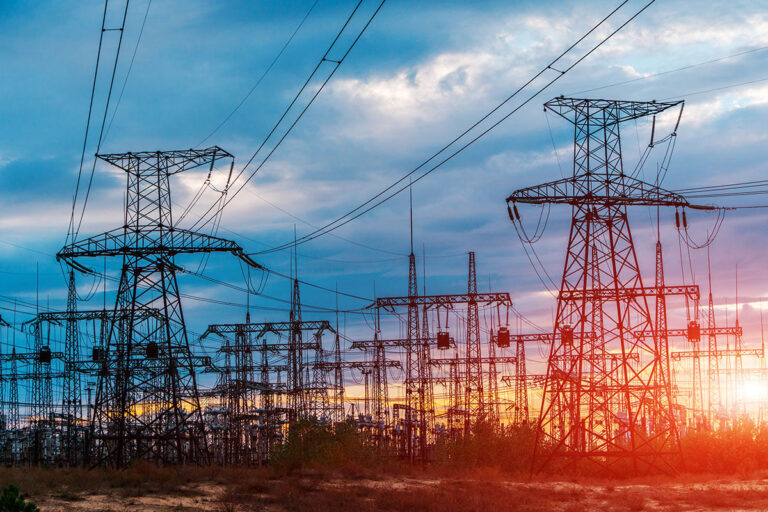Though originally put into place in the 1890s, initially designed to deliver electricity to consumers at a monthly cost based on consumption, the U.S. transmission system is more important than ever in the increasingly digital age. As the backbone of the grid, the transmission network delivers high-voltage power from large generators to local grids and industrial customers, acting as a highway system for electricity.
This network of transmission lines allows for flexible operation of the power system and provides resiliency benefits, as power can be delivered from diverse energy resources via multiple lines. However, with an influx of innovative technology thanks to the onset of digital transformation, the age of transmission is truly starting to show. The limited, one-way interaction of the transmission system makes it difficult to adequately accommodate the myriad of new devices and applications, which is an essential aspect given the increased reliance on digital equipment nowadays by both consumers and organizations.
Furthermore, on top of technological issues, the enhancement of the transmission system also stems from an eco-friendly standpoint. Climate change has spurred a sustainability movement, which is driving the shift from non-renewable to renewable resources. Traditionally, these transmission lines have transported power from coal, natural gas, and hydroelectric generators to our population centers on predictable schedules, but the clean energy future will demand more flexibility and geographical coverage from the grid.
“The clean energy transition is currently being hampered by our outdated power grid, and we cannot afford to leave this roadblock unchecked,” said Jason Huang, Ph.D., CEO of TS Conductor. “We need to increase grid capacity and efficiency quickly if we want to deliver green electrons where they are needed and if we want to support the massive electrification efforts underway across the nation and the world.”
The enhancement of the current transmission system is being tackled from a variety of different angles, which is no surprise given the multitude of different aspects that need improvement. For instance, global warming is resulting in transmission wires getting hotter, which means they’re unable to handle as much capacity, a problem of its own without considering the increased workload the system is expected to handle today and soon. Thankfully, innovation is already offering possible solutions to this problem in the form of a new kind of electric conductor.
Led by TS Conductor, a Minority Business Enterprise (MBE) and a public benefit company focused on sustainable development and GHG reduction, it has helped pioneer a new type of conductor that is made with aluminum surrounding a carbon composite core. By using these materials, the conductor can be made lighter, more durable, and more conductive than current aluminum-conductor steel-reinforced (ACSR) cables that have been the industry standard for more than a century. This means the new wires can increase electricity capacity by as much as 300 percent compared to traditional ACSR equipment.
On top of this, the new conductors can also reduce line losses by 50 percent due to electrical conductor inefficiency, which now adds up to between 5 and 15 percent of the power flowing on modern transmission grids. This benefits not only reconductoring projects, which replace old conductors with new ones but also for new-build transmission projects.
Currently, transmission capacity limits are a major barrier to connecting wind and solar projects that are already in active development, let alone the future projects that will be necessary to meet carbon-reduction goals. However, the improved capacity and efficiency are both highly valuable to transmission operators facing substantial upgrade costs to integrate new wind and solar power, as it helps negate the need for a major rehaul of existing infrastructure.
“The fact that TS Conductor technology can triple capacity and cut line losses in half can have major implications for our power grid. The increase in capacity will mean a decrease in curtailment for valuable renewable energy, and it will lessen the need to build dirty peaker plants to handle moments of intensely high demand,” said Huang. “Cutting line loses can also mean saving the U.S. economy billions of dollars.”
Overall, the current transmission system, and the way it is built in the U.S., are features of an energy system that is rapidly changing. With federal projects targeting 80 percent renewable energy by 2030, this represents an upcoming generational shift in the way power flows, how we develop our energy, and how consumers and enterprises interact with energy. Among this shift, the transition to aluminum-carbon conductors will be one that can not only offer a more powerful resilient transmission system but also spark a change toward a more eco-friendly, sustainable future.
“It is possible to have a more reliable and efficient power system all while making progress on climate action,” said Huang. “I have dedicated my work to this goal. I know that addressing our grid challenges is at the very heart of the issue.”
Read the full article here








